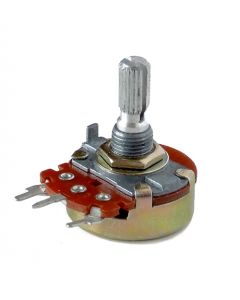- You have no items in your shopping cart
- Subtotal: ₦0.00
The LM317 is a popular adjustable voltage regulator used to provide a stable output voltage from a varying input voltage source. It is a three-terminal device capable of supplying a maximum of 1.5A of current. The output voltage can be adjusted using external resistors, making it versatile for various applications requiring a fixed or variable voltage supply.
Key Features:
- Adjustable output voltage ranging from 1.25V to 37V
- Capable of supplying up to 1.5A of current
- High voltage regulation with low dropout
- Internal short-circuit and thermal protection
- Easy to use with standard external components
- Wide input voltage range
Technical Specifications:
- Output Voltage Range: 1.25V to 37V
- Maximum Output Current: 1.5A
- Input Voltage Range: Up to 40V
- Dropout Voltage: 3V at 1.5A
- Line Regulation: 0.01% (typical)
- Load Regulation: 0.1% (typical)
- Package Type: TO-220, TO-3
Applications:
- Adjustable power supplies
- Battery chargers
- Voltage regulation in electronic circuits
- Power management in electronic devices
Usage:
- Connect the input voltage to the input terminal (IN).
- Connect the output terminal (OUT) to the load or circuit requiring the regulated voltage.
- Adjust the output voltage by selecting appropriate resistor values between the adjustment terminal (ADJ) and the output terminal (OUT).
- Ensure proper heat dissipation using a heatsink if necessary.
Caution:
- Verify input voltage and current limits to avoid damage.
- Use appropriate resistors for accurate voltage adjustment.
- Ensure adequate cooling to prevent overheating.
Datasheet:
For detailed technical specifications, refer to the LM317 Datasheet.



